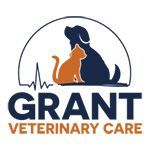Post-Operative Care Instructions
Read the following carefully before and after picking up your pet. If you have questions, please ask the veterinary staff at pick-up or call us at 757-786-8955 or email us.

After your pet has undergone surgery, it is essential to follow proper post-operative care instructions to ensure a smooth and speedy recovery. These instructions will help you provide the necessary care for your pet during the healing process. Please read the following instructions carefully and contact us if you have any questions or concerns.
Activity Restrictions:
Do your best to keep your pet calm, quiet and warm until the incision is completely healed within 10–14 days. Please avoid activities such as running, playing, jumping, and climbing stairs for the next 10-14 days as much as possible. Activity restriction will prevent the breakage of sutures and prevent swelling and internal bleeding. Dogs should be kept on a leash when outside, and too much activity can cause swelling and bruising of the incision or surrounding area and may cause internal bleeding.
Recovery After Anesthesia:
Due to the use of anesthesia, your pet may seem shaky or agitated the night after the surgery. If this occurs, keep them in a dark, quiet room to allow them time to recover.
Dietary Recommendations:
You may offer a small meal the evening after surgery. Your pet should not be nauseous due to the anti-nausea med injection they received while under anesthesia. Small dogs, puppies, and kittens less than six months old should be encouraged to eat the same day as surgery. If your pet vomits the evening after surgery or goes 24 hours without eating, please seek emergency medical attention.
Fertility:
Male cats and dogs may remain fertile for 30 days after being neutered. During this time, please keep them away from females that have not been spayed.
Incision Care:
Keep the incision dry for 10-14 days after surgery. Your pet’s sutures are dissolvable. Sutures do not require removal unless specifically indicated. Do not allow your pet to lick the incision. No bathing, swimming, or extended exposure to wet weather is allowed until the incision is healed. Do not bathe your pet for 14 days.
Check your pet’s incision daily for excessive redness, swelling, leaking/drainage, or opening of the incision. Some redness and swelling at the incision site is normal a few days after surgery. Keep the incision clean and dry.
Your pet or other pets in the household should not lick the incision. The skin was closed with surgical glue. Only if it appears to be undone, check for any abnormal (red, yellow, white, or green) discharge. Otherwise, the skin will close via second intention. Do not apply any topical medications or cover the incision unless directed to do so by a veterinarian. Email the clinic a picture of the incision if the surgery site looks abnormal or concerning to you.
Gum Color and Energy Level:
Please check your pet’s gum color frequently. Your pet’s gums should remain pink and moist. If your pet has naturally black gums, you can check under their lip or gently pull down on their eyelid to see the color. If you notice pale gums or inner eyelids, contact GVC or your regular veterinarian immediately.
Monitor your pet’s energy. Most pets resume normal energy 24-48 hours after surgery. Monitor your pet’s pain level. It is normal for pets to experience minor discomfort after surgery, but this should get better 24-48 hours after surgery. If you notice your pet is very tired or seems to be in pain, contact GVC or another veterinarian immediately.
Pain Management:
DO NOT give any type of human pain reliever, especially Aspirin or Tylenol, to your pet. These are toxic to pets and can cause death.
Your pet received an injection for pain that lasts for 24 hours after surgery and will go home with an additional 3-5 days of oral pain medication to be started the morning following the surgery (Carprofen for dogs and Meloxicam for cats) . Please follow medication instructions closely and give medication with a small meal. If the medication causes stomach problems (vomiting, diarrhea, lack of appetite), stop giving the medication, and call GVC or your regular veterinarian.
Harmless Symptoms Your Pet May Experience in the First 24 Hours After Surgery
- Shaking, whimpering, or extreme tiredness from the stress of surgery and the remaining pain medication in their system. This should subside in less than a day – just keep your pet warm and comfortable.
- Redness, swelling, or very slight oozing of the incision. Restrict your pet’s activity and use the E-collar.
- Cough, hoarse bark, or hoarse meow from the tube inserted in your pet’s throat to administer anesthesia. If coughing and sneezing lasts more than a few days, call your veterinarian.
- Lack or urination/defecation. Your pet hasn’t had much to eat or drink in 12 hours. Normal body functions should resume by the morning following the surgery.
What to Expect in the Weeks Following Surgery
- A firm lump or raised area at the incision site, usually from a reaction to the suture. Please call us or see your regular veterinarian if the lump remains for more than 2-3 weeks.
- Red or irritated incision, usually caused by licking. To avoid infections caused by licking, use the E-collar as instructed. If you are concerned about the incision site, call your veterinarian.
- If you have concerns about the incision, please call GVC and email photos to:
***EMERGENCIES***
Pets displaying these signs must be taken to an emergency vet at once!
- Pale gums
- Non-responsive, extremely lethargic
- Gaping or open incisions
- Continuous bleeding
- Continuous vomiting (multiple times an hour for more than 2 hours)
- Bloating of the abdomen
- Extreme pain
- Seizures
- Not eating or drinking within 24 hours (especially cats)
- Persistent vomiting and/or diarrhea
In Case of Emergency
During normal business hours - MON - FRI, 8am to 2pm
Please call or email GVC for questions or concerns following your pet’s surgery.
Grant Veterinary Care
Phone:
757.786.8955
Email:
staff@grantvetcare.com
After hours, or if GVC is not open
Please contact Bay Beach Veterinary Hospital or The COVE, your full service veterinarian, or any 24 hour emergency veterinary clinic for guidance.
Bay Beach Veterinary Hospital
4340 Virginia Beach Blvd
Virginia Beach, VA 23452
The COVE
6550 Hampton Roads Pkwy #113
Suffolk, VA 23435
Community Cats
- Community cats should be offered food and water as soon as they are alert and aware. They should be fed a meal before they are released. Cats that are stressed may not eat and will be more comfortable eating in their normal environment.
- Feral cats should remain in their trap until ready for release. To minimize stress, the trap should be kept in a warm, quiet, dimly-lit room. Cover the trap with a light-weight sheet, such as a pillowcase. Friendly community cats should be kept in a safe, enclosed room, such as a bathroom or garage.
- Do not attempt to handle feral cats. Gently lift the trap to see the incision and look for issues. You may notice slight bleeding from the incision or from the ear tip site immediately after surgery. This is normal and should get better as the cat calms down.
- Most cats will urinate and defecate within 24 hours of surgery. Do not put a litter box in a trap. Cats should be kept in a clean trap. The newspaper in the trap will help keep the cat dry if they urinate. Replace dirty newspaper with clean newspaper. Friendly community cats that are not recovering outside should be offered a litter box.
- Community cats should be released once they are alert, oriented, and able to walk. This usually happens 12-24 hours after surgery.

